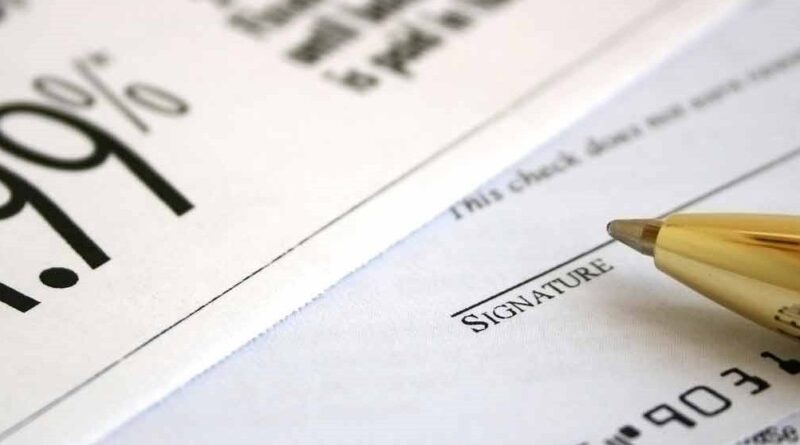What Exactly Is Mortgage APR?
Many or all of the products featured here are from our partners who compensate us. This may influence which products we write about and where and how the product appears on a page. However, this does not influence our evaluations.
Mortgage APR refers to the total amount of interest you’ll pay on your mortgage yearly. Learning how to calculate APR can save you a lot of money over time.
“What is mortgage APR?” is a common personal finance question with a fairly straightforward answer. Mortgage interest rate and mortgage APR (annual percentage rate) are two closely related yet distinct concepts that you’ll encounter when discussing mortgages. The interest rate is the amount you’re responsible for paying on your home loan each month.
The APR is the interest rate plus other fees and costs associated with buying a home. When looking for a good deal on a home, it’s important to know how mortgage rates can impact your expenses. Here, we’ll help you better understand what goes into a mortgage APR and harness this knowledge to find the best loan for you.
Key Takeaways
- Mortgage interest refers to the amount you’re charged each month.
- Mortgage APR includes your interest rate and other fees that you’re responsible for paying.
- APR includes interest, broker fees, origination fees, discount points, and more.
APR is what you’ll pay on top of the principal of your loan—the amount you borrowed when you first took out your home loan. This is why APR is sometimes called the percentage rate and is one example of the many confusing mortgage terms deciphered by our team.
Get matched with a personal
loan that’s right for you today.
The APR you pay on your mortgage includes:
- Interest rate
- Discount points
- Mortgage broker fees
- Mortgage origination fees
- Any and all costs that are associated with financing your loan
If you have a higher APR, then you can expect to make higher monthly payments for the term of your loan. You also want to really compare APRs and not just the flat interest rate. A lower interest rate and APR would be ideal, but the APR is really what you’ll pay. The lower your APR is, the better for your mortgage.
APR vs. Interest Rate
The interest rate is a percentage of the total loan amount the mortgage lender charges a borrower each year.
APR includes that interest rate and several other charges. It’s used primarily for fixed-rate mortgages, where your interest rate will stay the same during the entire period. Conversely, the APR on an adjustable-rate mortgage (ARM) is only a forecast.
Here’s an example of how interest rates work: Say you loan your nephew $500 to buy a new bike. In exchange, he agrees to pay you back in six months. You charge him a 5% interest rate—each month—for the favor. The interest and payments will break down like this:
- Interest Rate: 5%
- APR: 0%
- Monthly Payment: $84.55
- Total Cost: $507.32
- Interest Payments: $7.32
Due to the 5% interest rate, your nephew will eventually pay back all of the funds he borrowed, as well as an additional $7.32 bonus.
Here’s another example: Let’s say you charge your nephew a $20 fee on top of the interest in exchange for lending $500. The interest doesn’t apply to that $20 charge. Instead, that charge is paid out over the course of the loan as part of the monthly payment. The payments with APR will break down like this:
- Interest Rate: 5%
- APR: 18.6916%
- Monthly Payment: $87.93
- Total Cost: $527.61
- Interest Payments : $7.61
Both of these scenarios would apply to your home loan, where you pay interest and APR. Keep in mind that there are charges that don’t go into the APR category, such as closing costs, which aren’t included in APR.
How APR Affects Your Mortgage

APR helps you evaluate the true cost of borrowing money to buy a home. It also helps you spread out the costs of that purchase. If you decide to sell your home earlier, APR could help you pay less interest by avoiding some of the fees associated with your loan’s up-front cost.
Knowing your APR lets you measure how much interest you end up paying in the long run. It also lets you compare loans and fees to see how you can save money over the term of your loan.
What Is a Good APR for Your Mortgage?
A good APR for a mortgage is going to depend on the person, but a lower APR is always better. The APR is highly dependent on your credit score, so by improving your credit, you can get better rates.
The following are the average 30-year fixed mortgage rates by credit score, according to FICO®:
|
Credit Score |
Avg. 30-Year Fixed-Rate |
|---|---|
|
760 – 850 |
6.70% |
|
700 – 759 |
6.92% |
|
680 – 699 |
7.10% |
|
660 – 679 |
7.32% |
|
640 – 659 |
7.75% |
A mortgage calculator offers a simple way to estimate your monthly loan payments. It also shows how much of each of your payments goes to the interest of the mortgage loan as well as the principal (the actual amount you borrowed).
Be alert if the APR is more than 0.25% higher than the interest rate for a loan. Don’t be afraid to ask your loan officer questions, even if they seem silly or redundant.
Here are several ideas to keep in mind while shopping for mortgages:
Find Answers to Your Mortgage Questions at Credit.com
Even the most exhaustive guides may not be able to answer all of a person’s questions about APRs and interest rates in one go. Credit.com has a wealth of educational resources that can help you find answers to specific mortgage questions—and our library is always expanding.

